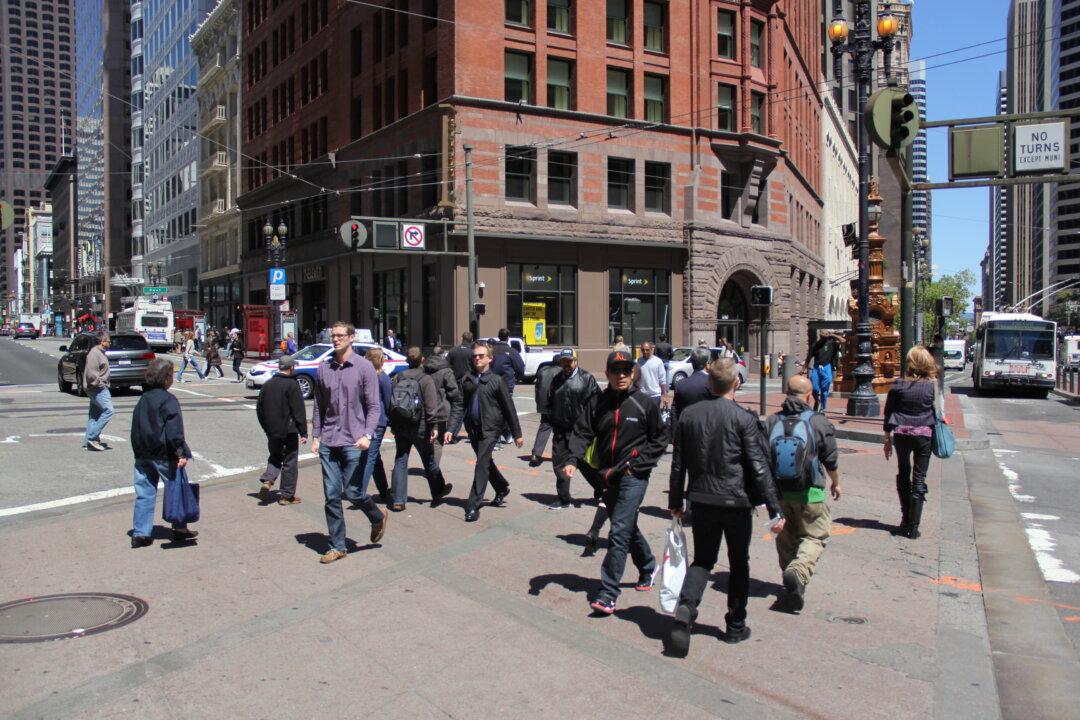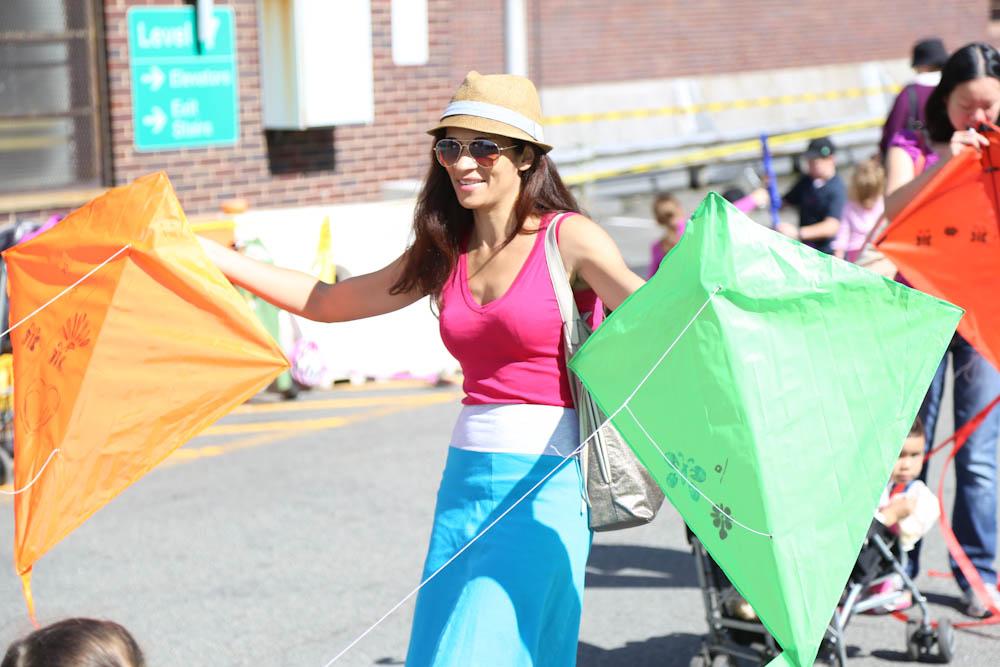SAN FRANCISCO—It doesn’t feel good to lag behind when you could be the best. San Francisco, currently a relatively dangerous place for pedestrians, is eager to become the most walkable city in North America by improving pedestrian safety on its streets.
The city’s goal is to decrease the number of people injured and killed on San Francisco streets by 50 percent by 2021. At present, about 20 people are killed each year on average.
Alongside that, the city hopes that encouraging more walking will ease congestion, help local businesses, and boost everyone’s health.
The mayor’s Pedestrian Safety Strategy and Action Plan, released last week, is an ambitious street-upgrade program over the next eight years, coupled with more policing and a public-awareness campaign.
More than 2,400 pedestrians have been injured, and at least 16 died on San Francisco streets in 2012, according to preliminary figures by the San Francisco Police Department. Children and seniors are the most vulnerable populations, with seniors being four times as likely to be killed by a car compared with younger adults.
“It’s unacceptable. It’s an epidemic,” said Supervisor Jane Kim at Tuesday’s hearing of the Land Use and Economic Development Committee. She lamented the fact that San Francisco is the least safe big city in California for walking.
By reviewing five years of data from the Public Health Department, the newly formed Pedestrian Safety Task Force identified areas that would make the most difference for safer walking.
The so-called high injury corridors—5.2 percent of street miles in the city—are where half of all pedestrians’ injuries and fatalities occur. Wide arterial streets like Van Ness Avenue that lead to the freeway tend to entice drivers to speed, one of the main reasons for collisions with pedestrians.
Upgrades to these priority streets—a total of 44 miles—by measures like widening of sidewalks, more greening, new traffic lights, and reopening of crosswalks will slow down traffic and thus make them safer.
The Department of Public Works will carry out additional physical improvements until 2021 that include re-engineered streets around five schools, longer crossing times at 800 intersections, and installing nine more plazas.
Most collisions happen at intersections. “The key issue is that people driving are failing to yield for pedestrians,” said Timothy Papandreou on Tuesday, deputy director of transportation planning at the San Francisco Municipal Transportation Agency. Failing to yield is the cause for 41 percent of collisions, most often when drivers make a left turn.
The San Francisco Police Department will also do its share for pedestrians’ safety by targeting so-called high-risk behavior. Besides enforcing yielding and speed limits, officers will crack down harder on running red lights and driving under the influence.
Short trips of less than a mile constitute a third of all trips in the city. By making walking safer, the city seeks to entice its residents to forgo the car more often and walk instead. This will also reduce traffic congestion and help meet the city’s greenhouse gas reduction goals.
Additionally, more walking will boost the local economy, as local studies have shown, and naturally improve the health of residents.
Board of Supervisor President David Chiu on Tuesday pointed out the newfound coordination among about a dozen city agencies responsible for pedestrian safety over the last months, which until now proved hard to do.
“We have a moment here where we can move forward a lot,” said Chiu. He expressed hopes that one day the city will reach a zero fatality rate.
Walk SF, a local pedestrian advocacy group, lauded the city’s plans to improve pedestrian safety as a “strong strategy” that truly has the potential to raise San Francisco to the level of New York and other major cities, said Elizabeth Stampe, executive director.




